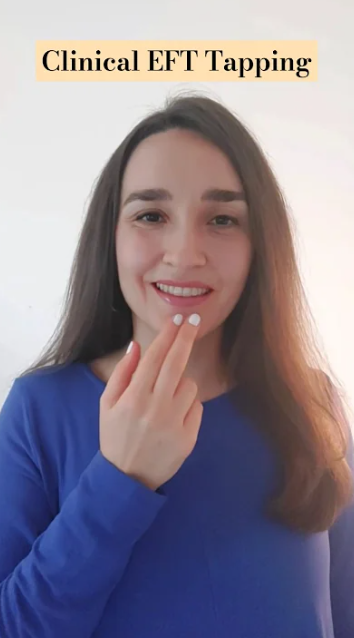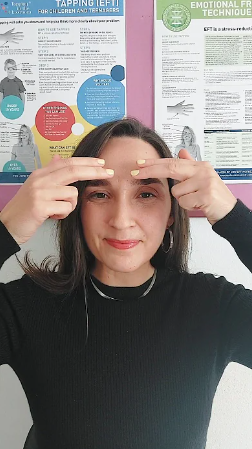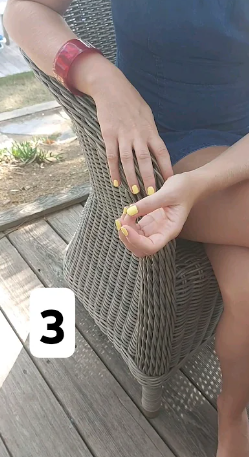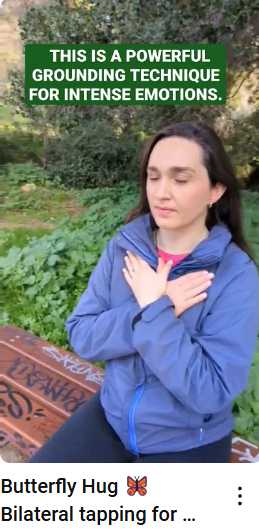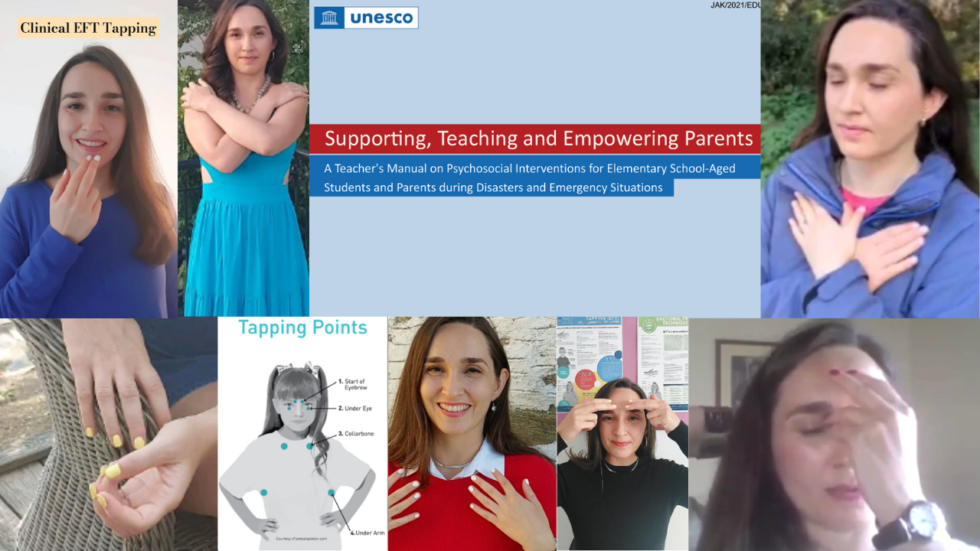
Humanitarian Aid: Psychological First Aid Tools For Kids and Adults
WHAT’S THE ISSUE: Global warming is leading to a rise in frequency of humanitarian crises such as flash floods, hurricanes, and forest fires affecting schools and local communities worldwide. Traditionally, front line Humanitarian Aid for kids and parents affected by natural disasters has focused almost exclusively on ensuring physical safety, for obvious reasons. Now, thanks to more and more people becoming aware of the importance of addressing psychological safety, schools and organizations are educating people on the importance of addressing kids and adults psychological safety in times of crisis. In this article I share with you five excellent Psychological First Aid tools I have come across to date that are suitable for children and adults in need of psychological Humanitarian Aid.
1. BAsic EFT TApping kids over 10 & ADUlts
In 2021, UNESCO put together a training manual for front line workers – teachers – to help profilirate knowledge of in psychological first aid tools that are suitable for crisis situations.
Teachers are local community leaders who have the skills and experience needed to deliver educational sessions to kids and parents. It is therefore not surprising that in June 2021, one of the strategies UNESCO recommended teachers as a psychological intervention for elementary school aged children and parents during disasters and emergency situations was EFT Tapping.
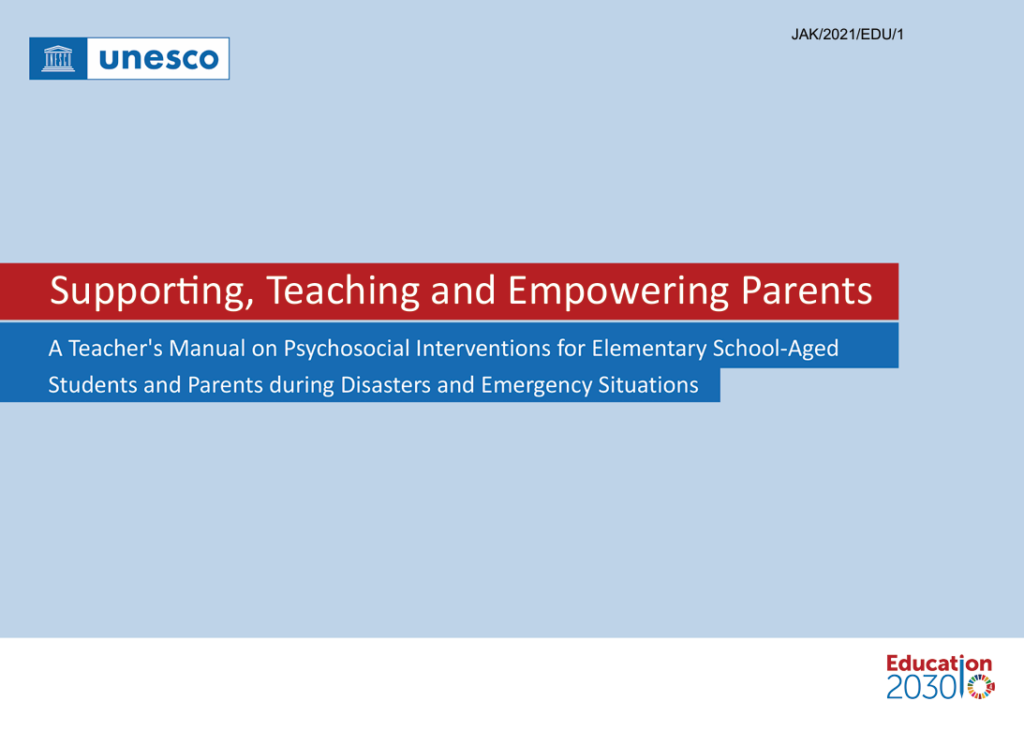
Below you will see the three pages that the manual dedicates to training teachers on how to teach basic EFT Tapping to their school community members in times of crisis (pages 78-80).

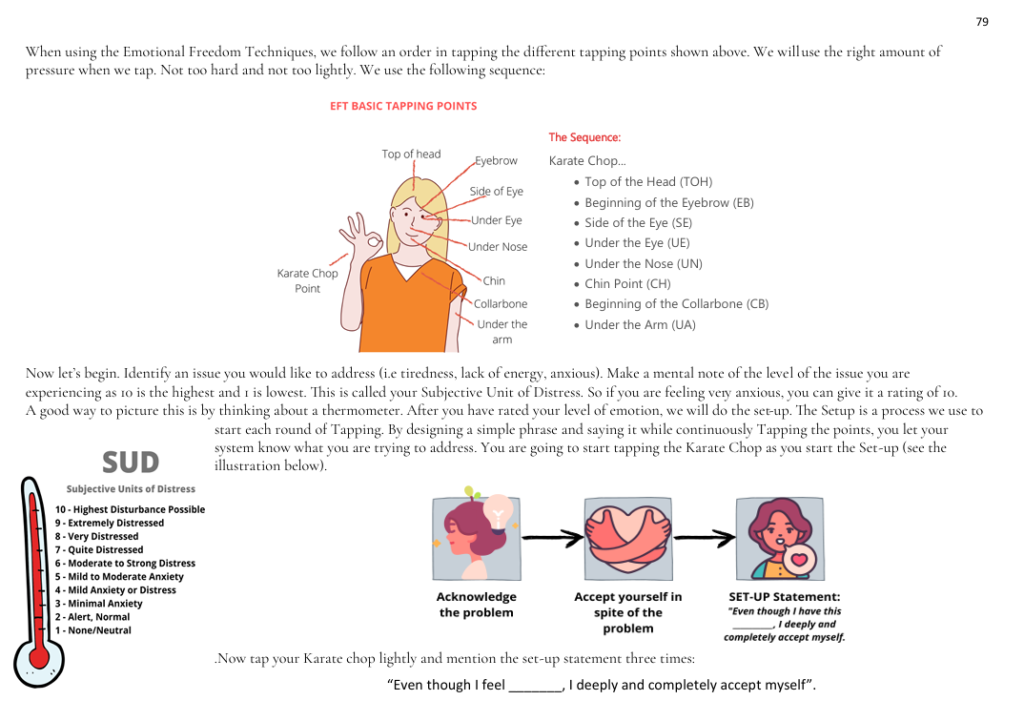
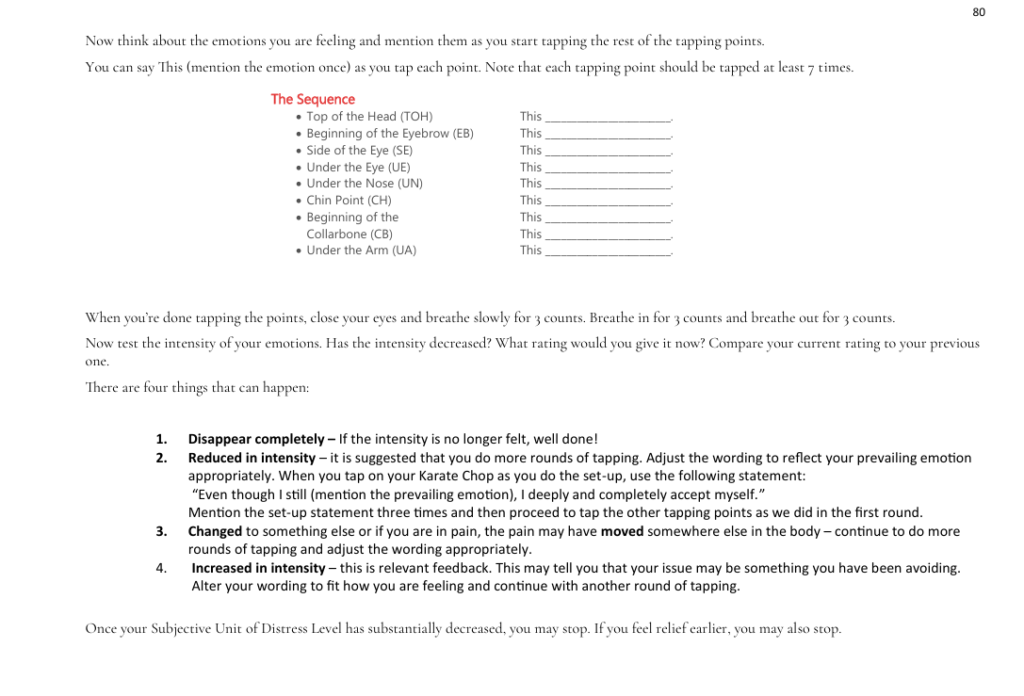
Another application of EFT Tapping for establishing psychological safety in the moment when a crisis is happening is Silent Tapping. When I do training on psychological first aid, the way I teach it is simply to stop and check whether you need to move to a safe space, and tap through the basic clinical EFT Tapping points (see video above). No words, just tap.
The main reason why I teach EFT for psychological first aid like this is that you are experiencing something shocking or a big emotion in the moment that you are in a crisis situation, so you don’t need words to get in touch with that emotion so that EFT can work. You are already in touch with the emotion – you are in it. So even if you just tap, and you keep tapping until you feel better, that is already a very powerful grounding application of EFT for first aid purposes.
BAsic EFT TApping For kids under 10
Meanwhile, when training teachers on applications of EFT as psychological first aid for children under the age of 10, I teach an abridged version of the 8 basic clinical EFT Tapping points.
This follows on from the advice given by Clinical Psychologist, Dr. Peta Stapleton, on age apporpriate applications of EFT Tapping to focus on these 4 Tapping Points when working with kids under 10.
The main reason for this is that younger children don’t carry as much emotional ‘baggage’ as older children, teens, and adults. So they often don’t tend to need to tap through all 8 of the clinical EFT Tapping sequence to get relief as psychological first aid.
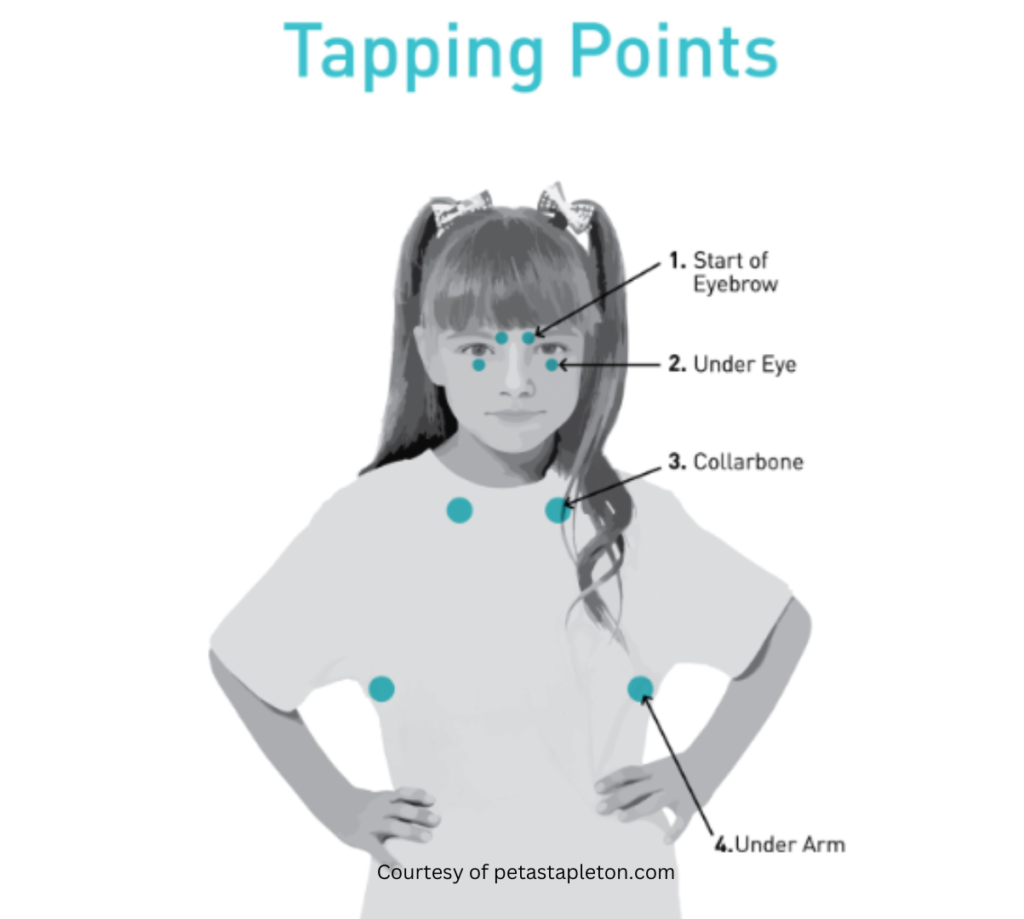
Here are two ways you can teach children under the age of 10 tapping how to tap on these four points (click on images below to watch me demonstration).
2. Discrete EFT TApping in public
If you are in a public space where it isn’t feasible to tap through the full EFT sequence on your face or upper body for emotional first aid, here are 3 alternative options for how to get a similar benefit by practicing EFT publically in a discrete way.
3. Butterfly Hug TApping
Another great tapping technique that’s safe and effective for Humanitarian Aid psychological first aid is Butterfly Hug Tappping. This form of tapping originated in 1998 to helpe Hurricane disaster survivors. It’s a fanstastic Emotional First Aid tool. Thumbs clasping, cross your hands over the chest, and alternate tapping on your upper chest (bilateral tapping.)
4. Havening Technique
Another excellent somatic technique for regulating the nervous system is called Havening. As with all the other tools I’ve already shared with you so far, this is also a somatic intervention that is based on the principles of self soothing to provide a corrective experience to your nervous system in the moment when you are experiencing a lot of distress.
5. TAT (Tapa Acupressure Technique)
Finally, another great Humanitarian Aid tool for psychological first aid is the Tapa Acupressure Technique (TAT). Developed in 1993 by Tapas Fleming (a California Acupuncturist), TAT simply invovles the following steps:
STEP 1: One hand: Thumb and ring finer above the tear duct, and middle finger around the third eye. Another hand above the occipital ridge, where neck meets the head (behind the head).
STEP 2: Hold until you feel calmer.
You can learn how to do this technique by watching me demostrate it and having a go via the video below (runs from 2:05-6:50).
In conclusion
All of the somatic techniques I have taught you here are safe and effective to use not only in the moment, but also to help our nervous system rebalance in the aftermath of a crisis. This includes before going to bed or first thing you do when you wake up. After all, one of the first things that is affected when we are experiencing traumatic stress or chronic stress in the aftermath of a disater or crisis is our sleep quality and quantity.
None of these techniques are trade marked or controlled by anyone. They are free to use and share as self-help and as educational metarial for your community if you are a teacher who wants to be part of the solution after you empower yourself with these tools.
The only thing I would caution against is pushing any of these tools onto anyone by being forceful or coercive. Make sure you do your own work first so that you are centered and coming from a place of offering them to anyone who is open to them and ready for them – not to pressure, nag, or force anyone to use them if they are not ready to do so.
MEET ELENI

Eleni Vardaki is a certified and accredited (Level 1, Level 2, Level 3) EFT Practitioner and Academic Coach who works with individuals, schools, and universities. In her private practice she offers therapeutic coaching services that support the well-being of kids and adults. She also delivers training on mental health topics such as how to apply EFT Tapping for Psychological First Aid in school settings.

